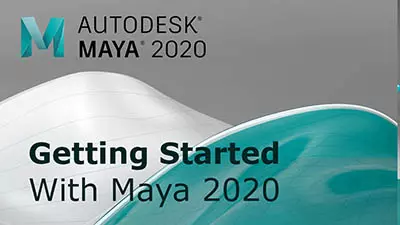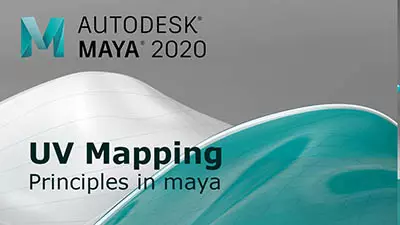Complex UV Layout in Maya
Over the last couple of years UV layout in Maya has changed for the better. In this course we're going to be taking a look at some of those changes as we UV map an entire character
#
1
02-05-2013
, 02:40 PM
Registered User
Join Date: Apr 2013
Join Date: Apr 2013
Location: Atlanta, GA
Posts: 15
aligning 2 high-poly meshes
#
2
02-05-2013
, 02:52 PM

Avatar Challenge Winner 2010
#
3
02-05-2013
, 03:48 PM
Registered User
Join Date: Apr 2013
Join Date: Apr 2013
Location: Atlanta, GA
Posts: 15
#
4
02-05-2013
, 04:00 PM
Edit: Your poly count does sound high try creating a normal map to a lower poly model

Avatar Challenge Winner 2010
Last edited by daverave; 02-05-2013 at 04:02 PM.
#
5
02-05-2013
, 04:04 PM
EduSciVis-er
Join Date: Dec 2005
Join Date: Dec 2005
Location: Toronto
Posts: 3,374
#
6
02-05-2013
, 04:26 PM
Registered User
Join Date: Apr 2013
Join Date: Apr 2013
Location: Atlanta, GA
Posts: 15
#
7
02-05-2013
, 04:38 PM
EduSciVis-er
Join Date: Dec 2005
Join Date: Dec 2005
Location: Toronto
Posts: 3,374
#
8
02-05-2013
, 04:39 PM

Avatar Challenge Winner 2010
#
9
02-05-2013
, 04:42 PM
EduSciVis-er
Join Date: Dec 2005
Join Date: Dec 2005
Location: Toronto
Posts: 3,374
#
10
02-05-2013
, 07:09 PM
Registered User
Join Date: Apr 2013
Join Date: Apr 2013
Location: Atlanta, GA
Posts: 15
I've tried snapping together the two null objects, odd results. But first, I had the idea to scale my null objects large enough to see them better when viewing the full mesh, this in anticipation of rotating one mesh (via its parent null) against the other. I also shaded one set of three null objects a different color from the other, making registration yet easier. Acquiring such simple skills ate a little time. Then I go to play with the snap alignment tool, and encounter totally unexpected behavior. Again, three null objects (spheres) precisely located at common points of interest on mesh 1, the mesh and the latter two null objects each parented to the first null — I move null 1, the other two nulls and mesh 1 follow. I do the same for mesh 2 and its corresponding 3 nulls. In the Hypergraph panel I select null 1, shift select null 2, I go to Modify, Snap Align Objects, Align Objects, see movement, but parent null 1 and parent null 4 aren't in the same location. If I move parent null 1 closer to null 4 before the snap align, I get different results, so it appears there's some kind of averaging of locations between the parent and all leaf objects that's operating on the alignment. Any ideas? Thanks again, it's kind of embarrassing being a toddler drooling uncontrollably;^(
Last edited by BenjyvC; 02-05-2013 at 07:11 PM.
#
11
02-05-2013
, 07:56 PM
EduSciVis-er
Join Date: Dec 2005
Join Date: Dec 2005
Location: Toronto
Posts: 3,374
#
12
02-05-2013
, 09:25 PM
Registered User
Join Date: Apr 2013
Join Date: Apr 2013
Location: Atlanta, GA
Posts: 15
#
13
02-05-2013
, 09:31 PM
EduSciVis-er
Join Date: Dec 2005
Join Date: Dec 2005
Location: Toronto
Posts: 3,374
#
14
03-05-2013
, 01:52 AM
3D Scanning: Alignment - YouTube
Imagination is more important than knowledge.
#
15
03-05-2013
, 02:52 AM
Lets have two surfaces A and B and they start out intersecting each other and are in the orientation we want. If you select three points (a1,a2,a3) on surface A that are coincident with three points (b1,b2,b3) on surface B.
Then you randomly rotate and translate the two surfaces.
You could realign them in three steps (for this process I am assuming that we are only interested in realigning surface A to surface B and not the two surfaces to the world coordinates.)
(Step 1 - TRANSLATION) There must exist a translation A(tx,ty,tz) such that a1 and b1 are coincident. In other words move surface A until its a1 end point is point constrained to surface B's b1 end point.
(Step 2 - ROTATION) With points a1,b1 point constrained there must exist a rotation of surface A about point a1 => A(rx,ry,rz) will bring the middle point of surface A (a2) together with b2 of surface B. In other words rotate surface A about point a1 such that a2 and b2 are coincident.
(Step 3 - ROTATION) now with a1 point constrained to b1 through translation and a2 point constrained to b2 through rotation of surface A about point a1 it should be obvious that we now only need rotate surface A about an axis running through the straight line between points a1,b1 and a2,b2. So we have a vector V<a1b1,a2b2> and there must exist a rotation about that vector V(rv) that will bring the points a3 and b3 together.
How you accomplish it in Maya I don't really know but to me the most intuitive solution involves 1 translation, 1 multi-axis rotation about a point, 1 single-axis rotation about a Vector between the first two point to realign the surfaces.
"If I have seen further it is by standing on the shoulders of giants." Sir Isaac Newton, 1675
Last edited by ctbram; 03-05-2013 at 04:46 PM.
Posting Rules Forum Rules
Similar Threads
Maya High to Low Poly
by cod3 in forum Maya Modeling replies 4 on 08-10-2013
Low-Poly vs. High poly vs. Clothes
by grunze in forum Maya Basics & Newbie Lounge replies 3 on 10-10-2003
High Poly Counts
by iron_tick in forum Maya Modeling replies 7 on 05-10-2003
low and high poly
by Sky_Kisser in forum Maya Basics & Newbie Lounge replies 7 on 14-05-2003
50 Unexpected Effects
by deviantdreamworks in forum Maya Basics & Newbie Lounge replies 0 on 06-10-2002
Topics
Free Courses
Full Courses
VFX News
How computer animation was used 30 years ago to make a Roger Rabbit short
On 2022-07-18 14:30:13
Sneak peek at Houdini 19.5
On 2022-07-18 14:17:59
VFX Breakdown The Man Who Fell To Earth
On 2022-07-15 13:14:36
Resident Evil - Teaser Trailer
On 2022-05-13 13:52:25
New cloud modeling nodes for Bifrost
On 2022-05-02 20:24:13
MPC Showreel 2022
On 2022-04-13 16:02:13










